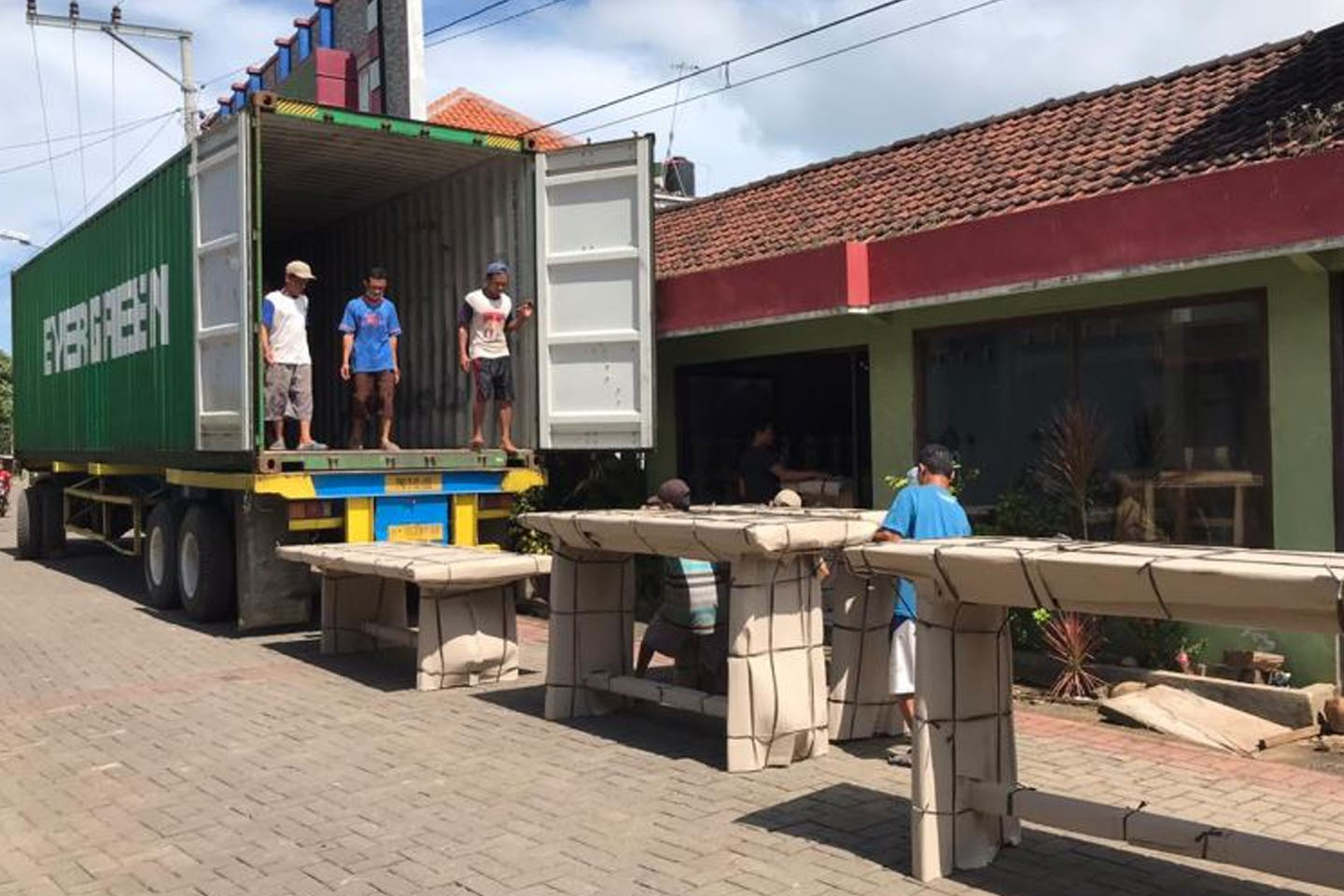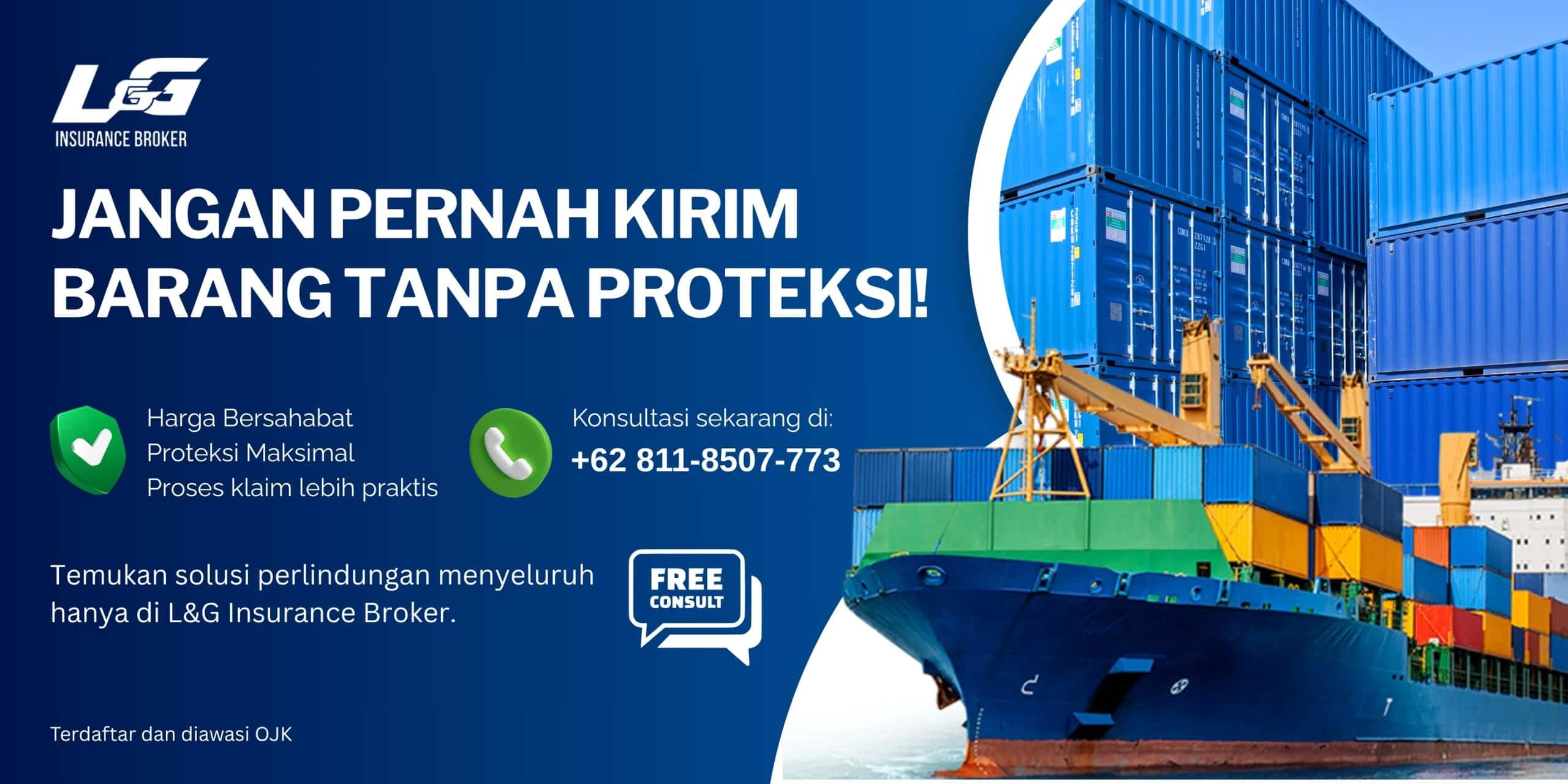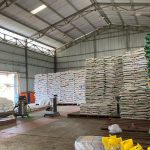Liga Asuransi – Dear risk managers, risk takers, and business owners,
How are you? I hope your business is thriving. Risk management and insurance are crucial in today’s dynamic landscape. This time, we delve into the intricate world of furniture transportation risks and insurance. Share this article with your colleagues to enhance their understanding. Let’s navigate the complexities together.
The global furniture market is a dynamic and rapidly growing sector, driven by increasing urbanization, rising disposable incomes, and changing lifestyles. In 2023, the market size was estimated at around $650 billion and is expected to continue expanding at a steady rate. The demand for furniture is particularly strong in emerging economies in Asia-Pacific and Latin America, where rising middle-class populations are seeking quality home furnishings. Additionally, the shift towards online retail has significantly influenced furniture sales, necessitating efficient and reliable transportation solutions.
Transportation demands for furniture are unique due to the bulky, heavy, and often delicate nature of these items. Efficient logistics are essential to ensure timely delivery, maintain product integrity, and manage costs. Furniture transportation involves a complex supply chain that includes manufacturers, distributors, retailers, and end consumers. Challenges such as handling large volumes, ensuring damage-free transit, and navigating regulatory compliance are prevalent.
Global furniture trade also means that shipments frequently cross international borders, requiring robust coordination and risk management to address potential delays, customs issues, and varying transportation conditions. As sustainability becomes a greater concern, there’s also a growing emphasis on eco-friendly packaging and transportation methods. Overall, the global furniture market’s expansion underscores the critical need for optimized transportation strategies to meet increasing consumer demands and maintain competitive advantage.
In Indonesia’s local furniture market, challenges include fierce competition, fluctuating raw material costs, and logistical complexities across the archipelago. However, opportunities abound with growing domestic demand driven by urbanization, rising disposable incomes, and a burgeoning middle class. E-commerce platforms are expanding access to consumers nationwide, while sustainable and innovative designs cater to eco-conscious buyers. Collaborations with local craftsmen and leveraging Indonesia’s rich cultural heritage also offer avenues for differentiation. Overcoming infrastructure constraints and adopting technology-driven logistics solutions will be crucial to capitalizing on these opportunities and navigating market challenges effectively.
 Importance of Efficient and Secure Transportation
Importance of Efficient and Secure Transportation
Efficient and secure transportation plays a pivotal role in ensuring the smooth operation of supply chains across various industries, including furniture. It directly impacts the timely delivery of goods, cost-effectiveness, and the preservation of product integrity throughout the journey from production to the end consumer.
Firstly, efficient transportation minimizes delays, optimizing production schedules and meeting customer expectations for timely deliveries. This efficiency translates into improved customer satisfaction and retention.
Secondly, secure transportation mitigates risks such as theft, damage, and loss, which are especially critical for valuable goods like furniture. Utilizing secure packaging, tracking technologies, and trained personnel enhances the safety of shipments, reducing the likelihood of disruptions.
Moreover, efficient and secure transportation supports sustainability goals by reducing carbon footprints through optimized routes and load consolidation, contributing positively to environmental stewardship.
In essence, efficient and secure transportation is not merely about moving goods; it’s about safeguarding reputation, minimizing costs, and fostering sustainable growth in the competitive landscape of furniture and logistics industries.
Potential Risks in Furniture Transportation
Transporting furniture involves several potential risks that can impact the supply chain and operational efficiency. These risks include:
Damage during Handling:
Furniture items are often bulky, heavy, and susceptible to damage from rough handling during loading, unloading, and transit. Improper stacking, inadequate securing, or mishandling can lead to scratches, dents, or even breakage, affecting product quality and customer satisfaction.
Weather and Environmental Conditions:
Exposure to adverse weather conditions such as rain, humidity, or extreme temperatures can damage furniture materials, particularly wood and upholstery. This risk is heightened during outdoor storage or transportation without adequate weather protection.
Theft and Pilferage:
Furniture, especially high-value pieces, is a target for theft during transit or while stored in warehouses. Inadequate security measures or insufficient surveillance can make shipments vulnerable to theft, leading to financial losses.
Delayed Deliveries:
Delays in transportation due to logistical issues, traffic congestion, or customs clearance can disrupt supply chains. This can result in missed delivery deadlines, penalties, and dissatisfaction among customers.
Regulatory Compliance:
Non-compliance with transportation regulations, including weight restrictions, safety standards, and documentation requirements, can lead to fines, delays, or even shipment rejections.
Natural Disasters:
Events such as earthquakes, floods, or hurricanes pose significant risks, particularly in regions prone to these disasters. They can cause complete loss of cargo or severe damage, impacting both suppliers and customers.
Effective risk management strategies are essential to mitigate these risks. These may include using secure packaging, implementing strict handling protocols, employing GPS tracking systems for real-time monitoring, securing comprehensive insurance coverage, and partnering with reliable logistics providers. Addressing these risks proactively ensures the safe and efficient transportation of furniture, minimizing disruptions and protecting the integrity of the supply chain.
Risk Management Strategies
Risk management strategies for furniture transportation are crucial to mitigate potential risks and ensure the safe delivery of goods. Here are effective strategies:
Robust Packaging:
Use durable and protective packaging materials to safeguard furniture from damage during transit. Custom-fit packaging can prevent movement and reduce the risk of scratches or breakage.
Secure Handling Protocols:
Implement strict handling procedures at all stages of transportation, from loading to unloading. Trained personnel should handle furniture with care to avoid mishandling and physical damage.
Enhanced Security Measures:
Install GPS tracking systems and employ secure storage facilities to monitor shipments and prevent theft. Tamper-evident seals and surveillance cameras can enhance security during storage and transit.
Optimized Route Planning:
Plan transportation routes to avoid high-risk areas prone to theft or adverse weather conditions. Efficient route planning reduces transit time and minimizes exposure to potential delays or hazards.
Comprehensive Insurance Coverage:
Secure marine cargo insurance that covers risks such as damage, theft, natural disasters, and delays. Ensure the insurance policy is tailored to the specific needs of furniture transportation to provide financial protection.
Regulatory Compliance:
Stay updated with transportation regulations and ensure all documentation and permits are in order. Partner with customs brokers to facilitate smooth customs clearance and avoid regulatory penalties.
Supplier and Partner Selection:
Collaborate with reputable suppliers and logistics partners with a proven track record in furniture transportation. Regular audits and performance evaluations help maintain service standards and reliability.
By implementing these risk management strategies, furniture businesses can minimize potential disruptions, protect valuable cargo, and uphold customer satisfaction through safe and efficient transportation practices.
Insurance Solutions for Furniture Transportation
Insurance solutions tailored for furniture transportation are essential to protect against various risks and ensure business continuity. Here are key insurance coverages and considerations:
This policy covers furniture shipments during transit by sea, air, or land. It typically includes protection against risks like theft, damage from accidents, natural disasters, and mishandling. Furniture, being bulky and often fragile, benefits greatly from comprehensive marine cargo insurance.
Warehouse Storage Insurance:
Covers furniture while stored in warehouses awaiting transportation. This insurance guards against risks such as fire, water damage, theft, and structural collapses, providing financial protection during storage periods.
Transit Insurance:
Specifically designed for goods in transit, this policy ensures coverage from the point of departure to the final destination. It includes protection against damage during loading/unloading, theft, accidents during transportation, and delays that impact delivery timelines.
Customs Bond Insurance:
Essential for international shipments, this insurance guarantees payment of customs duties and taxes if there are delays or issues with customs clearance. It ensures smooth passage through customs checkpoints without financial setbacks.
Protects against third-party claims for bodily injury or property damage caused by furniture transportation activities. It covers legal fees, settlements, and medical expenses, providing financial security in case of lawsuits.
Business Interruption Insurance:
Covers financial losses incurred due to disruptions in furniture transportation, such as delays, accidents, or natural disasters. It compensates for lost income and helps cover ongoing expenses during downtime.
Choosing the right insurance solutions requires understanding the specific risks associated with furniture transportation and selecting policies that provide adequate coverage tailored to business needs. Working with experienced insurance brokers like L&G Insurance Broker ensures comprehensive protection and peace of mind, safeguarding furniture businesses from unforeseen financial losses and liabilities.
Types of Coverage: ICC A, ICC B, and ICC C
ICC (Institute Cargo Clauses) A, B, and C are standard types of marine cargo insurance coverage that provide varying levels of protection for goods during transit:
ICC A:
This is the most comprehensive and highest level of coverage among the three. It protects against all risks of loss or damage to the insured goods, except for specific exclusions mentioned in the policy. ICC A typically covers risks such as theft, fire, sinking, and damage caused by accidents during loading/unloading.
ICC B:
Provides coverage for a broader range of risks compared to ICC C but with certain limitations. It includes risks such as fire, sinking, collision, and overturning of the transporting vessel or vehicle. However, ICC B excludes some risks that ICC A would cover, such as inherent vice or insufficient packing.
ICC C:
Offers basic and more limited coverage compared to ICC A and B. It typically covers fewer risks and is often referred to as “named perils” coverage. Common risks covered by ICC C include fire, sinking, and collision of the transporting vessel or vehicle, but it excludes many other risks unless specifically added.
Choosing the appropriate ICC clause depends on the nature of the goods being transported, the perceived risks, and the level of coverage needed to protect against potential financial losses. Each clause offers varying degrees of protection, with ICC A being the most comprehensive and ICC C providing the least coverage among the three.
Use only an insurance Broker, avoid via the agent
When it comes to securing insurance for your furniture transportation needs, opting to use an insurance broker rather than going through an agent can offer distinct advantages. Here’s why relying on an insurance broker is preferred:
Expertise and Advice:
Insurance brokers are specialists in their field. They possess deep knowledge of various insurance products, including marine cargo insurance tailored for furniture transportation. Unlike agents who typically work for specific insurance companies, brokers work independently and have access to multiple insurers. This allows them to provide unbiased advice and help you choose the most suitable coverage options based on your specific requirements.
Access to Multiple Insurers:
Brokers maintain relationships with a wide network of insurance companies. This means they can obtain competitive quotes from different insurers, ensuring you get the best coverage at the most favorable premiums. They negotiate on your behalf, leveraging their relationships to secure comprehensive policies that meet your needs.
Customized Solutions:
Brokers tailor insurance solutions to fit your unique business circumstances. Whether you’re transporting high-value antique furniture or bulk shipments of modern pieces, brokers can arrange coverage that adequately protects your goods against risks such as theft, damage, and transit delays.
Claims Assistance and Advocacy:
In the event of a claim, brokers act as intermediaries between you and the insurance company. They advocate on your behalf to ensure claims are processed fairly and efficiently. Brokers understand the complexities of claims procedures and can provide valuable support to expedite the resolution process, minimizing disruptions to your business operations.
Long-term Partnership:
Building a relationship with an insurance broker fosters long-term benefits. They can offer ongoing risk management advice, review your insurance needs as your business grows, and make adjustments to your coverage accordingly. This proactive approach helps you stay adequately protected against evolving risks in the furniture transportation sector.
Using an insurance broker offers comprehensive expertise, access to multiple insurers, customized solutions, claims advocacy, and long-term partnership benefits that agents may not provide. This makes them the preferred choice for ensuring your furniture transportation operations are securely covered.
Why use L&G Insurance Broker?
As a prominent insurance broker in Indonesia, L&G Insurance Broker stands out as a trusted partner in the realm of insurance solutions, particularly for businesses involved in furniture transportation. With years of industry experience and a robust understanding of the local market dynamics, L&G Insurance Broker excels in delivering tailored insurance products that cater specifically to the needs of furniture exporters and importers.
What sets L&G Insurance Broker apart is their commitment to excellence in customer service and their ability to provide comprehensive coverage options. They work closely with a wide network of reputable insurers to offer competitive premiums and ensure that clients receive the most suitable policies for their unique requirements. Whether you’re seeking protection against risks like theft, damage, transit delays, or natural disasters, L&G Insurance Broker can craft a solution that safeguards your business interests effectively.
Moreover, L&G Insurance Broker’s proactive approach to risk management and claims handling ensures that clients receive prompt assistance and support throughout the insurance process. They prioritize client satisfaction by offering personalized advice, timely responses to inquiries, and efficient claims resolution.
For furniture businesses in Indonesia looking to secure reliable insurance coverage and benefit from expert guidance, L&G Insurance Broker is the go-to choice. Contact L&G Insurance Broker today to learn more about how they can protect your furniture transportation operations and provide peace of mind amidst potential risks. Ensure your business thrives with the right insurance partner by your side—choose L&G Insurance Broker for comprehensive protection and professional service.
Visit L&G Insurance Broker’s website or contact their dedicated team to discuss your insurance needs and discover why they are Indonesia’s leading choice for insurance solutions in the furniture transportation sector.
Protect your assets with confidence—partner with L&G Insurance Broker today.
For all your insurance needs, Call L&G Insurance Broker now!
—
MARINE CARGO INSURANCE FOR FURNITURE SHIPMENT WILL BE SAFER WITH US – DON’T WASTE YOUR TIME AND CALL US NOW
24 JAM L&G HOTLINE: 0811-8507-773 (CALL – WHATSAPP – SMS)
website: lngrisk.co.id
Email: customer.support@lngrisk.co.id
—





















